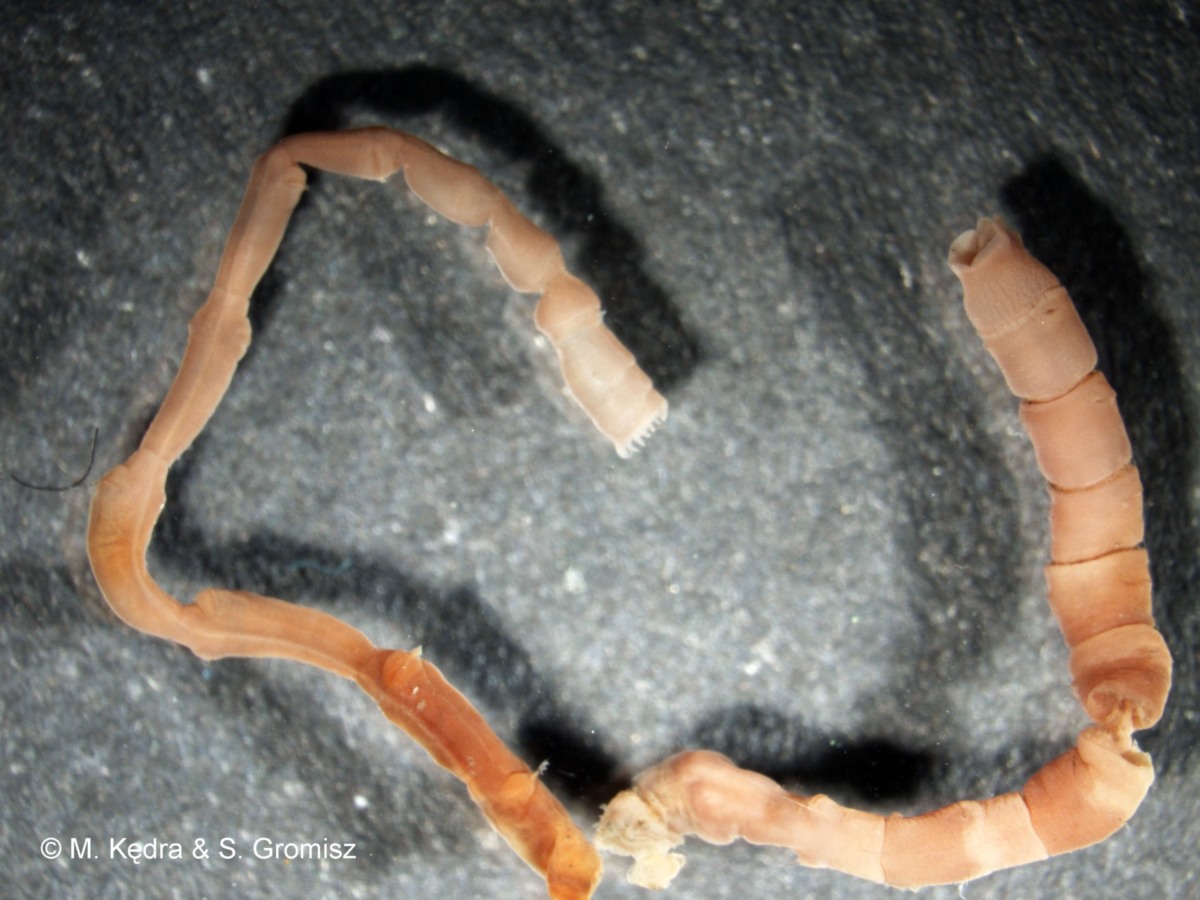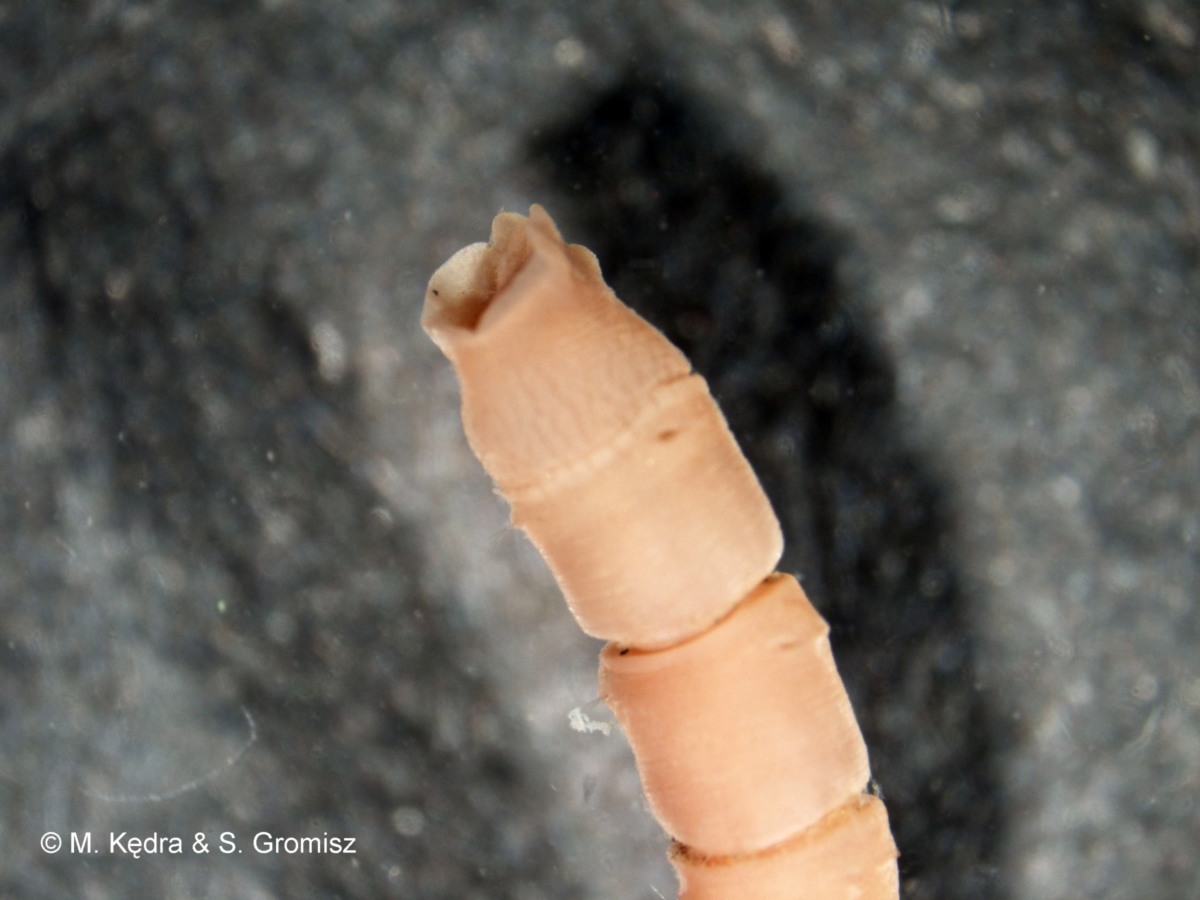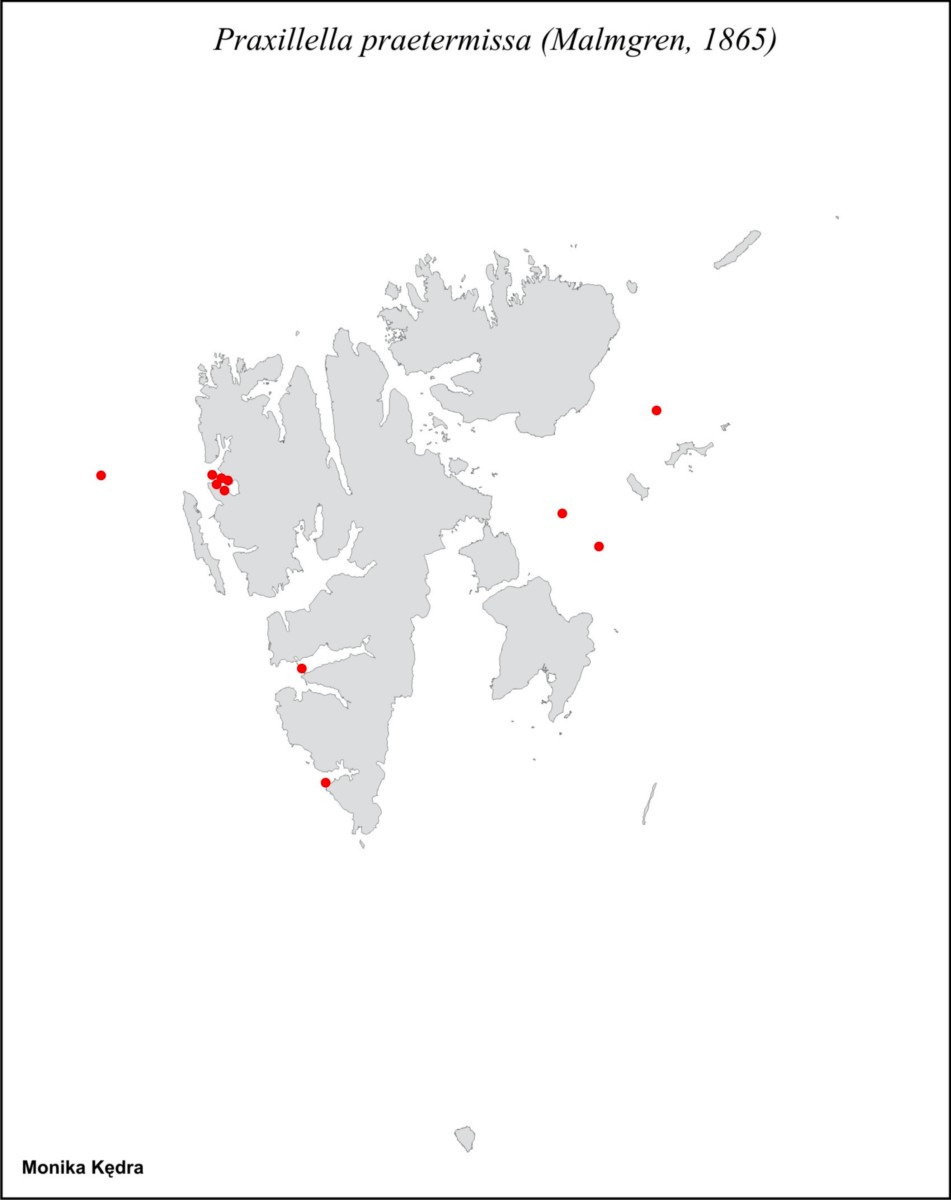Praxillella praetermissa (Malmgren, 1865)

|

|

|
Praxilla praetermissa Malmgren, 1865
Clymene intermedia Oersted, 1843
Praxilla gracilis Tauber, 1879
Praxillella praetermissa Arwidsson, 1906
Clymene praetermissa Fauvel, 1927
Euclymene praetermissa Hartmann-Schröder, 1971
Distinguishing characteristics
Cephalic rim, higher anteriorly, laterally and posteriorly weakly incised.
Palpod indistinct.
Pygidium funnel-shaped with numerous short filamentous and one longer ventral cirrus.
Species description
Body long, strong and cylindrical, head with oval cephalic plate. Cephalic rim, higher anteriorly, laterally and posteriorly weakly incised. Palpod indistinct, without ocelli. 19 chaetigers. Notopodial capillaries smooth with narrow or broad wings. Anterior 3 segments with 2-7 stout chaetae on the neuropodia. Other segments with normal hooks. Neurochaetae present on all chaetigers. Four pre-pygidial achaetous segments plus a callus ring. Pygidium funnel-shaped and short, with 20-40 short filamentous and 1 longer ventral cirrus. Anal cone not longer then cirri. Tube - straight or slightly bent, covered with mud, fine sand and foraminiferans.
Size
Up to 100 mm for 19 chaetigers.
Color
Anterior 8-9 chaetigers brownish-red spotted, 4-8 chaetigers with light band in front of parapodia.
Habitat
From 10 m down to more than 4900 m deep, tubes in all types of soft bottoms, or fixed to shells. Found from the sublittoral zone to depths greater than 50 m.
Mobility
Sedentary.
Feeding
Surface deposit feeder.
Life cycle
Distribution
Arctic, North Pacific, North Atlantic up to Mediterranean, Adriatic and Sea of Marmara to English Channel, North Sea, Skagerrak, Kattegat, the Belts, Öresund to Bay of Kiel.

